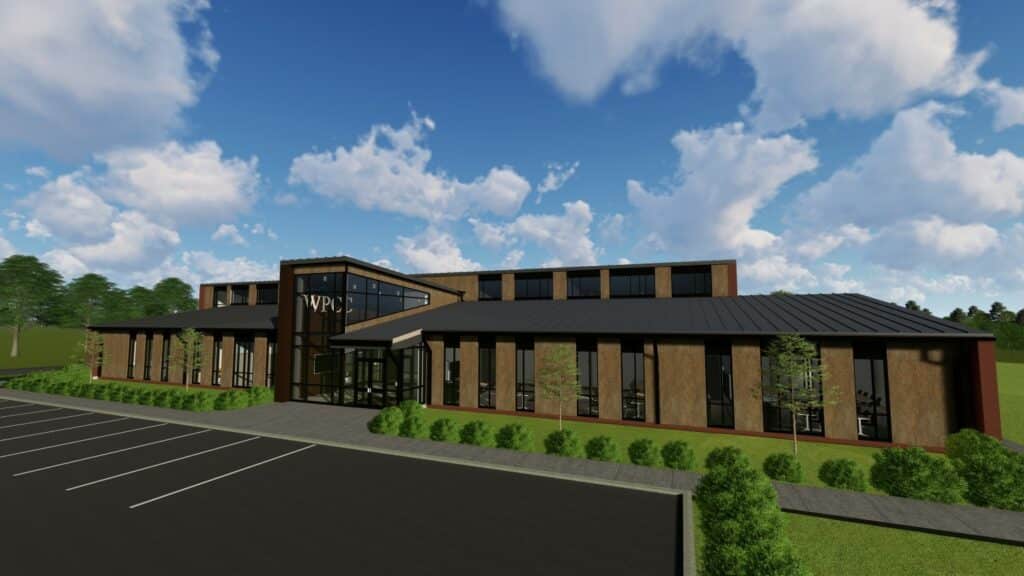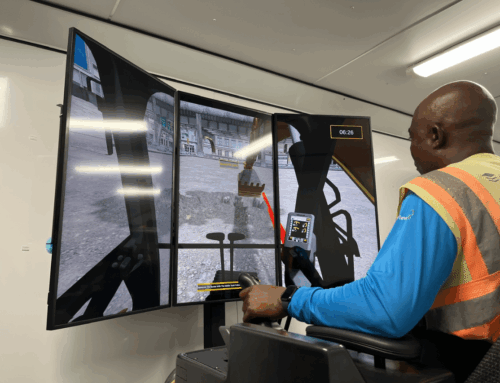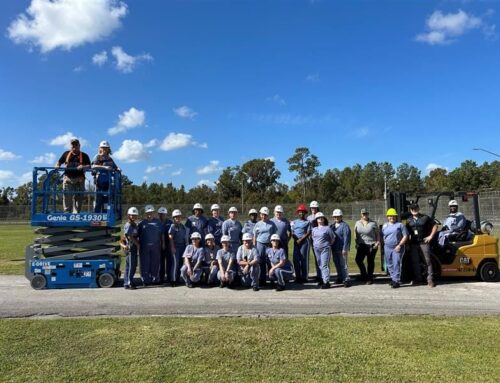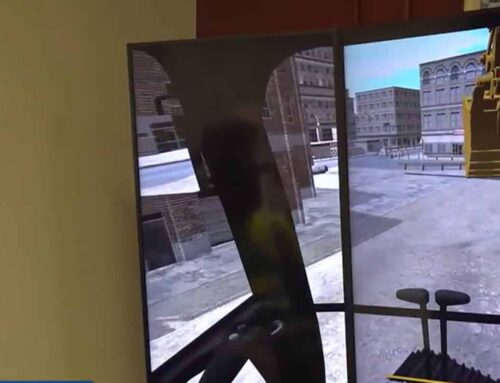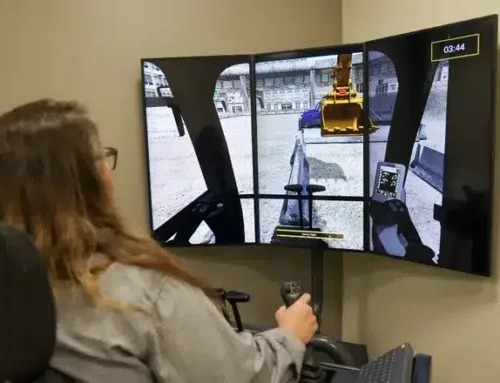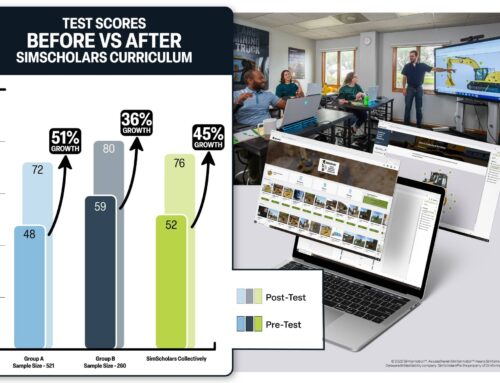Sitting amongst green, lush trees on 300 acres of rolling hills, Western Piedmont Community College (WPCC) in Morganton, North Carolina, offers more than 36 associate science degrees in healthcare, business, education and industry. Among its many curricula is the Heavy Equipment Operator (HEO) program which includes courses designed to prepare students for entry-level jobs in the construction industry.
WPCC Dean of Applied Technologies, Michael Daniels, explained the college recognized the need for students to be trained on heavy equipment after talking with local contractors, subcontractors and builders in the area. “They couldn’t find anybody who could run a backhoe, excavator or dozer. That’s when we decided the heavy equipment operator program would be a perfect addition to our suite of programs,” said Daniels. “We knew Cat® equipment was the gold standard of machines and so were Cat Simulators. We knew they would be a perfect fit.”
Students can now receive hands-on training on the college’s Cat® Simulators systems which WPCC Coordinator HEO/Instructor Terry Adams credits to Rick Furse, WPCC Dean of Workforce Development. Furse’s insight into the Cat Simulators program has proven invaluable to Adams who assembled after watching the Simformotion, LLC. assembly video. “I didn’t have to call information or tech support because it flowed together pretty easily,” explained Adams. “A lot of it was already set up for me. And everything was identified and marked which made it easy to finish assembling. I just had to make sure I was doing everything according to the video which was very informative.”
Simformotion™ Support Services Team
Simformotion, the licensee for Cat® Simulators for Caterpillar Inc., offers installation for customers. Should customers request installation, the Simformotion Support Services team will travel to the customer’s site to set up and install the Cat Simulators systems. Additionally, customers can also receive on-site or virtual training on a multitude of topics, including each exercise’s training objectives; how to use SimU Campus™ to its fullest capabilities; how to position the controls, pedals, monitors correctly and more.
Shortly after Adams finished setting up the simulators, Simformotion Support Services team member Dany Sarraf traveled to WPCC to familiarize Adams with the Manager’s Workstation and SimU Campus, the system’s records management software.
“Terry was my very first install and training customer,” explained Sarraf who travels the world training and educating instructors on Cat Simulators. “Terry was awesome to work with because he was so engaged and eager to learn. Good customer relationships are crucial to our success.”
During his three days at WPCC, Dany reviewed SimU with Adams and helped network the two simulators via the Workstation. “Dany was very informative. He made me set up the computer and the monitors, then made me tear one down,” explained Adams. “It was a great hands-on experience.”
-Dany Sarraf, Simformotion Support Services
Convenience of Workstation and Convertible Cat® Controls
The Workstation’s convenience has proven invaluable to Adams. “I have the Workstation in my office and the simulators in another room. It’s very convenient and works very well that way. I’m able to make all the changes in my class rosters and more. It’s pretty self-explanatory.” Adams continued, “I also can track my students’ attendance and see who’s been on the simulators if they do the exam mode. I can look on the workstation and see how long they stayed on and what they did. I don’t have to take their word for it. I can see it.”
In addition to the Workstation, Adams also appreciates the authentic, convertible Cat controls and how easily he can convert the college’s two simulators into four different machine models: the hydraulic excavator, dozer, small wheel loader and advanced dozer. “I can change the convertible controls out in 20 minutes,” said Adams.
The ability to change the simulator from one model to another quickly makes a difference to Adams when he demonstrates the simulators at local high schools. Students from as young as seventh grade have taken part in the demonstrations. “I do demonstrations with the simulators allowing younger students to be able to see it, operate it and feel the controls,” explained Adams. “They get to see exactly what the different pieces of equipment do in construction.”
Cat Simulators at WPCC’s Construction Rodeo Trades Competition
Recently more than 100 students from 10 local high schools had the opportunity to experience the college’s two simulators at the WPCC’s Construction Rodeo Trades Competition. “A few years ago, we realized one of the many challenges to attracting students to the construction industry is that students don’t get excited about working in the trades, so we decided to make it very much like a sports event where the different schools come together and have fun competition,” said Daniels who organized the rodeo. “The students spend the day competing for prizes at various stations that align with what the schools are teaching like carpentry and plumbing.”
The simulators were one of 10 stations that students could visit and try their hand at during the day-long rodeo. “The Cat Simulators were a big hit,” said Daniels. “The students were able to spend time on each simulator and experience what operating the equipment is like.”
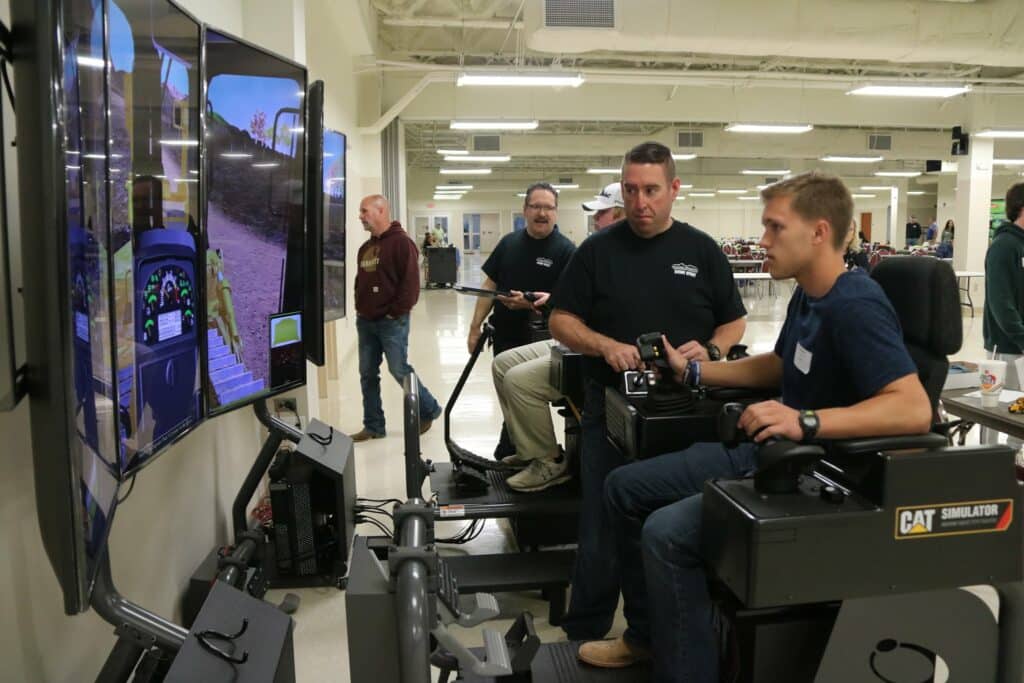
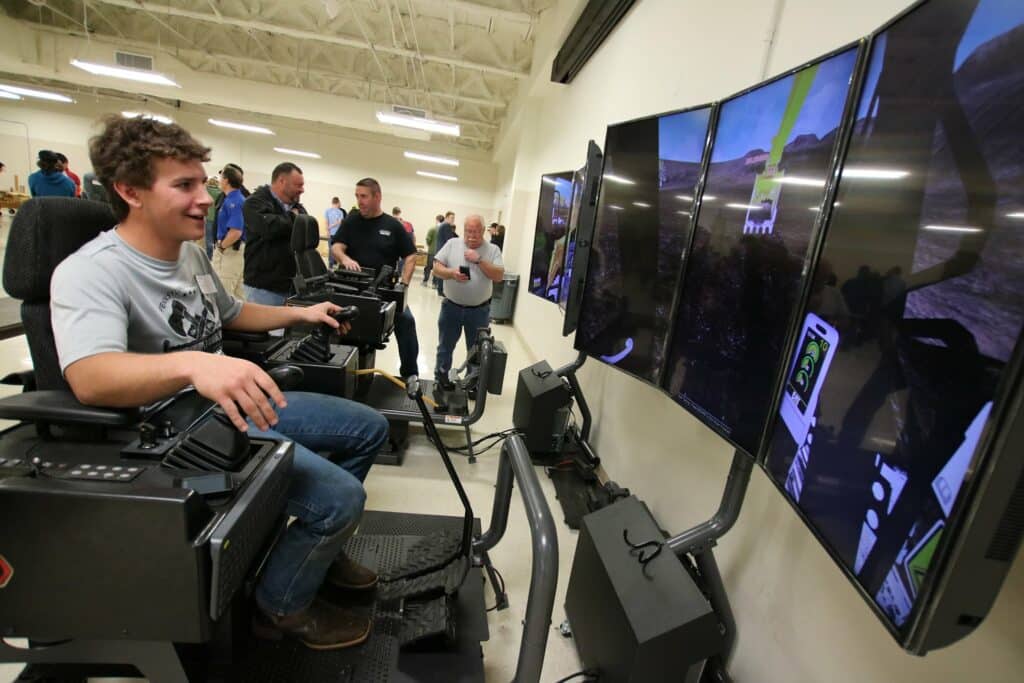
WPCC Construction Rodeo Trades Competition.
Daniels explained the college also invites local industry partners such as contractors and plumbing businesses as well as companies like Lowe’s and DeWalt to be part of the Construction Rodeo. He continued, “They set up booths to meet and talk with the students. And in some cases, they literally interview the students and make job offers that day. The best students get direct leads that can lead to employment almost immediately.”
“We also offer Work-based Learning which is a formal class that’s customized by the student, employer and college,” explained Daniels. “They all agree on what the student will do during their time on the job. The best-case scenario is that the student really likes the employer, and the employer likes the student which leads to full time employment.”
Daniels added, “We try to prepare students for real-life jobs by integrating soft skills into the Work-based Learning like arriving on time, working as a team player and going the extra mile so the students will be successful.”
“We try to prepare students for real-life jobs by integrating soft skills into the Work-based Learning like arriving on time, working as a team player and going the extra mile so the students will be successful.”
-Michael Daniels, WPCC Dean of Applied Technologies
Preparing Students for Construction Industry Jobs
The Construction Rodeo is just one of several ways WPCC promotes its HEO program. The college recently held a four-day HEO Simulator Academy where students learned hands-on about the medium hydraulic excavator, its controls and how to operate it safely. On the final day, students had the opportunity to use their new skills and knowledge to operate a real mini excavator.
“I explain to my students that the simulator’s purpose is to get them familiar with the controls and for them to get some experience operating heavy equipment virtually.” He continued, ”At first getting on the simulator is a little intimidating for the students. I have to coax them into sitting in the seat and explain they’re not going to get hurt or hurt anything. They’re not going to tear anything up or crash it. Then they get more comfortable and start learning.”
To date, 20 students have completed WPCC’s HEO course and five are currently learning how to operate the hydraulic excavator. “The simulators are very user-friendly,” said Adams. “Spending time on the simulators and completing the exercises really teaches the students and prepares them to operate heavy equipment. It’s a win-win for everyone.”
WPCC Skilled Trades Solution Center
In April 2021, through the North Carolina Community-Based Grants Initiative, the Golden LEAF Board of Directors awarded WPCC $1.5 million to construct the Skilled Trades Solution Center to train students skilled trades to meet the projected demand of more than 3,700 positions over the next five years.
The 30,000-square-foot facility will sit in the front of the beautiful, rolling, countryside campus with mountains in the background and will address the regional shortage of skilled trades workers, explained Daniels. “It will support the training needs of students from the surrounding counties in construction, plumbing, electrical, heating and air conditioning and heavy equipment.”
The Skilled Trades Solution Center building is scheduled to be completed by early summer 2023 with students in the new facility by fall 2023.
